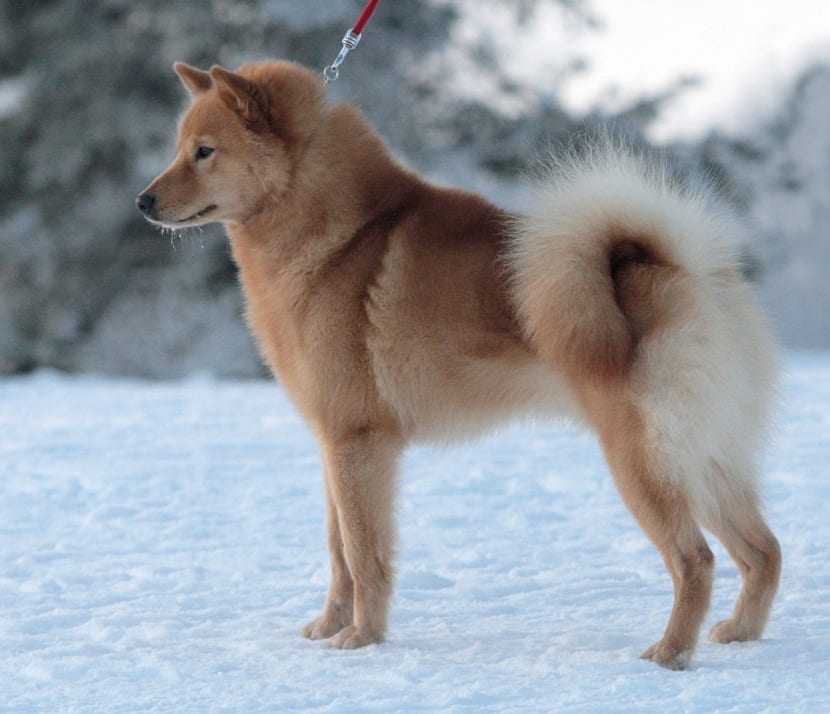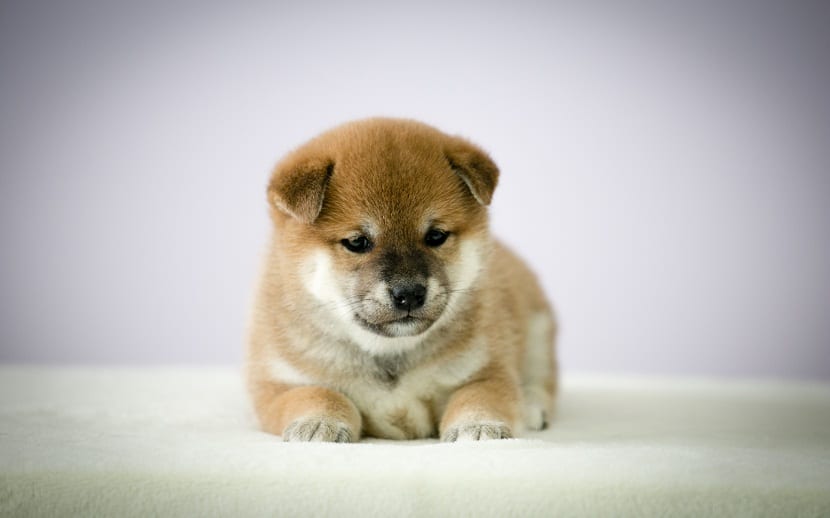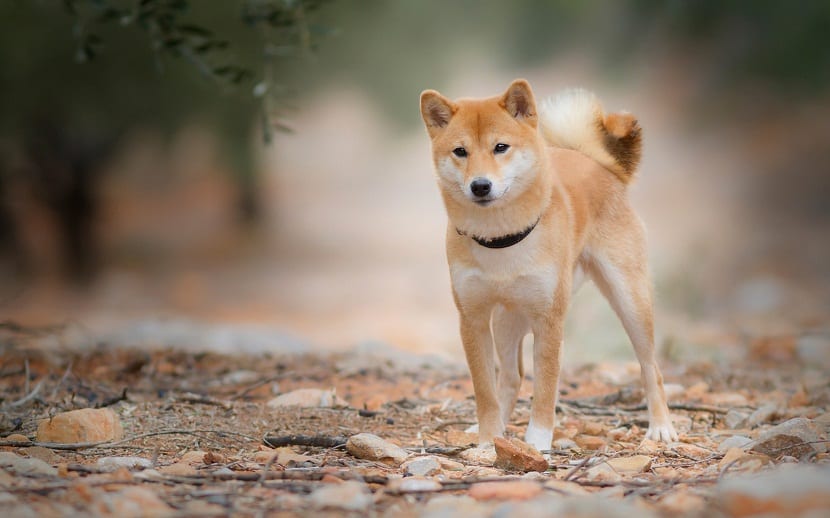
The Finnish Spitz is a beautiful Nordic breed of dog, as its name implies from Finland. Adapted to harsh weather, the Spitz is an expert hunter. In contrast to the cold climate, this breed is extremely warm, friendly and a great companion animal. This is a sociable and balanced pet and since 1960 it has become popular in the rest of Europe. Its elegant bearing and wonderful features are positioning it very well as animal companion.
Origin of the Finnish Spitz
The Spitz breed has several centuries of history. The function of these dogs in the Nordic countries was to be hunters and is that they were experts tracking and marking the position of elk and grouse. There is no reliable information on Spitz ancestors, what is certain according to genetic studies is that the wild wolf shares an important genetic load with these dogs.
From the end of the XNUMXth century, a official breed registration culminating in the establishment of the first official standard in 1892. By 1979 and when it was named the official dog of Finland, the Spitz had been participating in dog shows and events for a century, earning a privileged place in the Nordic country.
Features
The Finnish Spitz corresponds to a medium-sized dog and its appearance is generally reminiscent of the appearance of a fox. The approximate weight of the males of the breed is between 14 and 16 kilograms. Females tend to weigh less, being between 11 and 13 kg. On the other hand, the male has a height of height at the withers between 43 and 51 centimeters. The female can measure between 39 and 45 centimeters.
The body of this breed of dog is square in shape, has a certain athletic demeanor and noticeable muscles. It is a slender animal with strong, straight limbs.. The back and back are short and the tail tends to curve from the base and is heavily covered with fur. The way of carrying the tail is elongated and glued to the back.
The head is oval in shape when viewed from a superior perspective. Widens to the ears symmetrically from the cheeks. The profile is straight with a narrow muzzle and a powerful jaw. The eyes are almond-shaped and have a lively look. The ears are straight and pointed and set high and in the shape of a triangle. The Spitz always keeps them upright. The Finnish Spitz's hair is double-coated like dogs from cold regions.
The inner underlayer is woolly, waterproof, soft and dense, the outer layer being longer and rougher to the touch. The coat is long, especially at the shoulder height and shorter on the legs and head. The color of the coat is bright red or golden red, the color being much more intense on the back and lightening on the cheeks, ears, throat, chest, inside of the legs and the tail. For standard matters only small white spots are allowed on the feet.
Character
The character of the Finnish Spitz is that of a truly sociable dog. He is cheerful and loving in his interaction with people even if they are strangers. Although he is somewhat reserved, it is very difficult for him to be aggressive. This makes it an ideal pet for children because it is also very playful and patient.
He has a balanced temperament, with a good dose of courage and determination. To be a sociable dog it is quite independentAlthough he enjoys company, he still loves having his space. Excess barking in this breed is a sign of boredom. Like all hunting dogs, they have a lot of energy and requires constant physical activity. Emotional and physical balance largely depends on exercise.
Education
The training of these dogs is not a simple matter, it requires perseverance and patience. It is ideal to start socializing the Spitz as a puppy, either with people or other pets. It is recommended prevent the pet from feeling that orders are being imposed since their attitude will be rebellious. In the case of this breed, the ideal is to carry out two daily sessions of fifteen minutes and always in the form of a game. Continuity must be maintained in order to appreciate the results. Use the positive reinforcement y avoid any type of abuse.
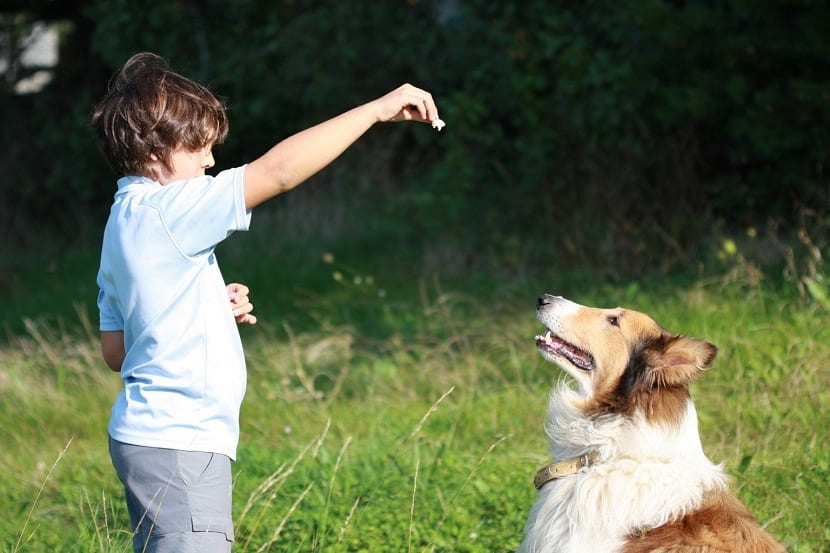
Care and health
The average life expectancy of the Spitz is about 12 years. This is the normal period for a medium-sized breed that basic care has been provided. Beyond the regulatory vaccinations, dewormers and periodic visits to the veterinarian, there are two aspects in this breed that should be given special attention: the coat and physical activity.
The double-coated coat of these pets should be brushed regularly for at least two to three days a week. This in order to remove dirt and avoid parasites. It is also a very important time to inspect the pet's skin and detect any abnormalities such as redness in time. Another fundamental aspect in the care of this dog is provide daily physical activity. This activity should not be limited to short walks, this breed needs to run and expend energy. Agility activities are highly recommended as well as taking them to enjoy dog parks and outdoor races.
It is important to note that while they are puppies the Spitz requires their personal space, so they can be provided with their own sleeping bed and they will not feel alone. Puppies' teeth erupt quickly and cause discomfort so they seek to bite everything in their path to calm down. Ideally, provide them with several dog toys that they can chew on to soothe dental discomfort.
"Salud"
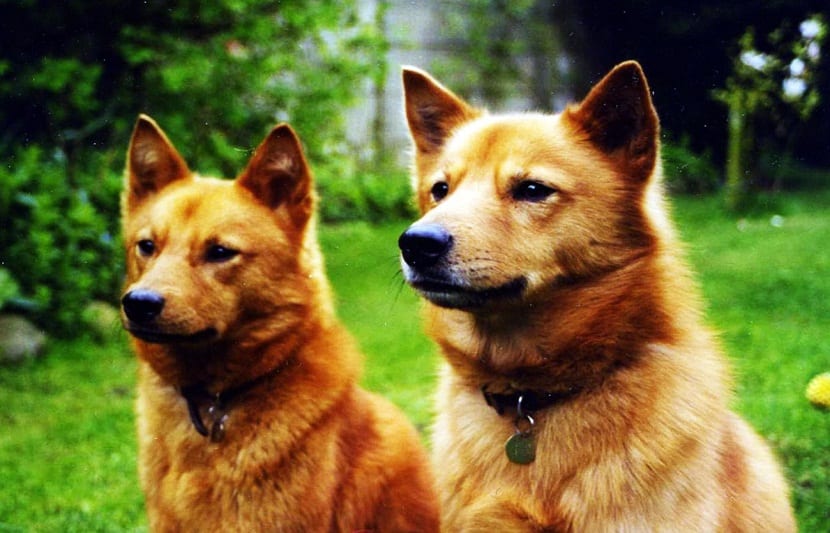
Health is truly exceptional. Breeders have been making strategic crosses for more than a century that have practically eradicated the breed's congenital diseases. The only drawback is that they have delicate skin and the owner must always be vigilant to avoid complications. The best way to prevent skin conditions is maintaining hydration especially in hot climates. It is also very important to bathe every six to eight weeks only with products for the breed recommended by the veterinarian.
This breed is gaining popularity as a companion pet, however it is important to advise owners to always acquire the offspring in professional breeders. It is also important to note that this breed is not suitable for sedentary or elderly people, since they require a lot of physical activity.
